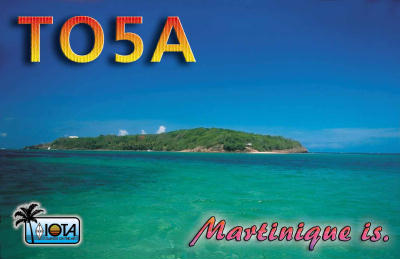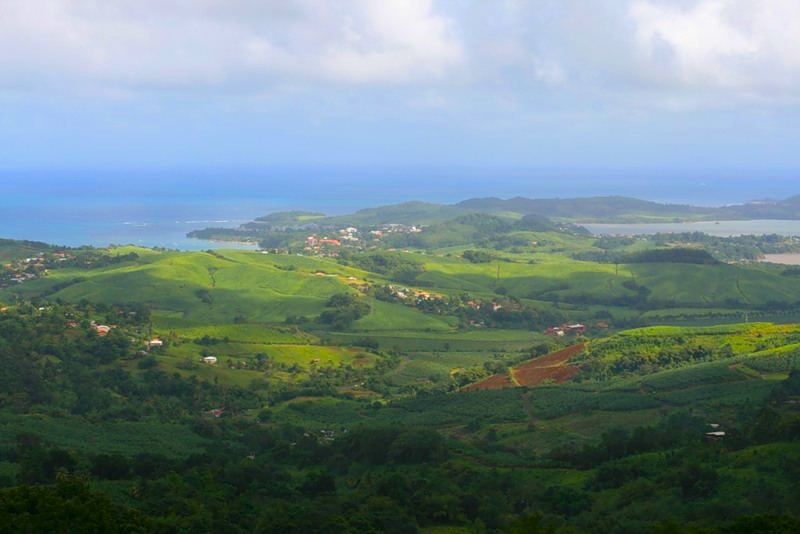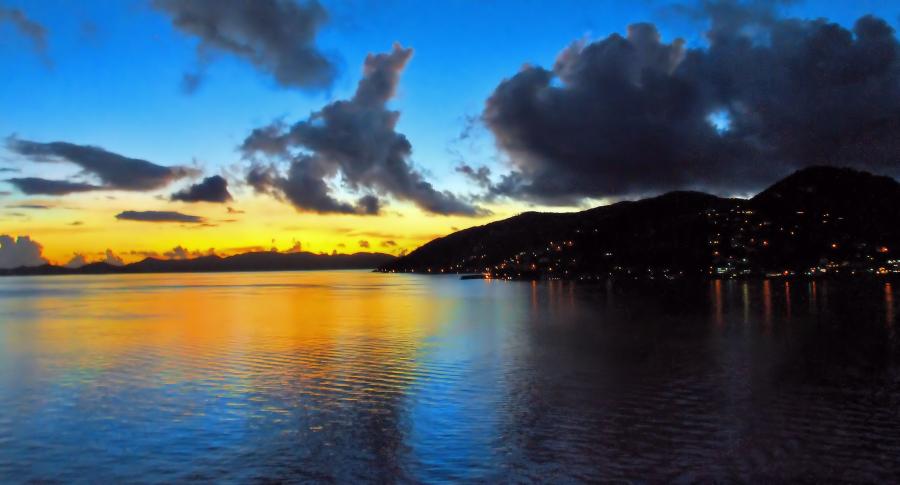TO5A Team will be active from Martinique Island, IOTA NA - 107, in CQ WW DX SSB Contest, 26 - 27 October 2024.
Team - FM5BH, F8AAN, FM5FJ, F5VHJ.
Recent DX Spots TO5A
TO5A Log search They will operate in Multi - Two Category.
QSL information:
For USA amateur radio stations via WA6WPG.
For others QSL via F5VHJ, LOTW, ClubLog OQRS.
Ads for direct QSL:
THOMAS A THOMAS, 1149 GENTLE DR, CORONA, CA 92880, USA.
For others via F5VHJ, ClubLog OQRS, LOTW.
Ads for direct QSL:
ALBERT CRESPO, LIMOUSIN, 47120 ST. ASTIER DE DURAS, France.
Martinique is an island with a fascinating history and beautiful nature!
Hidden in the heart of the Antilles archipelago, Martinique is generously endowed with all the virtues typical of other Caribbean islands - fabulously beautiful beaches, a variety of sea products, abundant fruit mixes, hospitable local population.
A place where you don't have to count time!
When you first arrive on the island, you can't tell whether you're in the Caribbean or somewhere in the European Mediterranean - the European cultural influence is so strong. It is not surprising! After all, the first French colonizers appeared on the island in 1635. European settlers founded the fortification of St. Pierre in Martinique. The indigenous population of the island - Carib Indians - tried to resist the capture and send away the uninvited "white" guests, but by 1660 they were exterminated or died a natural death, unable to cope with new diseases. For exhausting work on tobacco, cotton and cane plantations the French began to import African negroes, who were hardy enough for physical labor. It was not until the 17th century that Martinique began to cultivate coffee trees.
In 1822 there was a revolt in Martinique. The number of rebellious laborers grew rapidly, and France had to employ the services of foreign troops to suppress them. As a result of subduing the slaves on the island suffered about six hundred white people and was strung up six thousand blacks. Among those who sympathized with the slaves was a category of European colonists who saw the Negroes as the backbone of the colony and had no respect for the laws of the French metropolis. In 1824, another conspiracy of locals, who planned to completely exterminate Europeans in Martinique, was thwarted. This time France managed to maintain social order among the inhabitants. In 1848 slavery in the French colonies was abolished, and in 1870 the islanders were given the right to elect parliamentarians and themselves elected to the main executive body of the republic. Today, the islanders elect two French senators and four deputies to the National Assembly.

And this is really interesting!
An important historical landmark on the island is the Montagne Pele volcano. Until 1902, it was considered to be a rather large dormant volcano of the Caribbean atoll, but harmless and safe. And here in April 1902 began its gradual awakening, it lasted a month and ended with a terrible eruption that took the lives of 28 thousand islanders and the destruction of the nearby town of St. Pierre. Of the inhabitants of the most beautiful city in the West Indies at that time, a prisoner survived, who was saved by the walls of a solitary cell in the basement of the city casemate, and a shoemaker living on the outskirts of the city.
Amazing fact, but during the eruption of Montagne Pelee died the famous French illustrator and artist Paul Mervart - a native of Kherson province, who arrived on the island earlier, with the purpose of describing and capturing the eruption. Pele's explosion is in its own way a unique phenomenon that has been described and entered into the modern classification of volcanic eruption types. Later, only the Bezymyannyi Volcano in Kamchatka in 1965 exploded with such a large pile of viscous lava in the form of domes and fiery clouds above the summit. As an eternal reminder of the tragedy, the Museum of Volcanology was opened on the island.

A very small France!
The capital of the island is the bustling port city of Fort-de-France, a purveyor of rum, fruit and cocoa. It is not for nothing that the locals like to say that where there is no rum, there are no pleasures in life. Local Caribbean rum can be both light and dark. It is not at all similar to its European alcoholic analog. In Martinique, the autochthonous alcoholic beverage is called agrikol or agricultural rum. Light - light or dark - aged in oak barrels for at least three years, locals drink it in a gulp without diluting it. Visitors drink rum diluted or in the form of cocktail mixes.
 Sunset, Martinique Island. Author - Isabela C. Soniak.
Sunset, Martinique Island. Author - Isabela C. Soniak.
The capital of Martinique, Fort-de-France, can be called "Little France" without compromise. There are so many buildings here that imitate the exteriors of the former metropolis. For example, the Episcopal Church of St. Louis in Versailles, a monument of national importance in France, echoes the St. Louis Fort-de-France Navy Yard and the Cathedral of the same name. The local cathedral, more than a hundred years younger, is built in Romanesque style and is the resting place of former governors of the island. The Basilica of the Sacred Heart, hovering over Montmartre Hill, has a twin sister on the island, the Sacré-Coeur de Balata Church.
The jewel of Martinique are the botanical gardens of Balata. Horticulturist Jean Phillip Toz for twenty years painstakingly brought here samples of flora from all over the world. He not only carefully planted tropical plants, he arranged the garden with artificial ornamental ponds, lilies and white lotuses. In general, he proved to be a skillful landscape designer, and now his garden is fragrant with a multitude of orchids, begonias, hibiscus, etc., truly justifying the assumption that Martinique means "island of flowers" in the dialect of the local natives.

